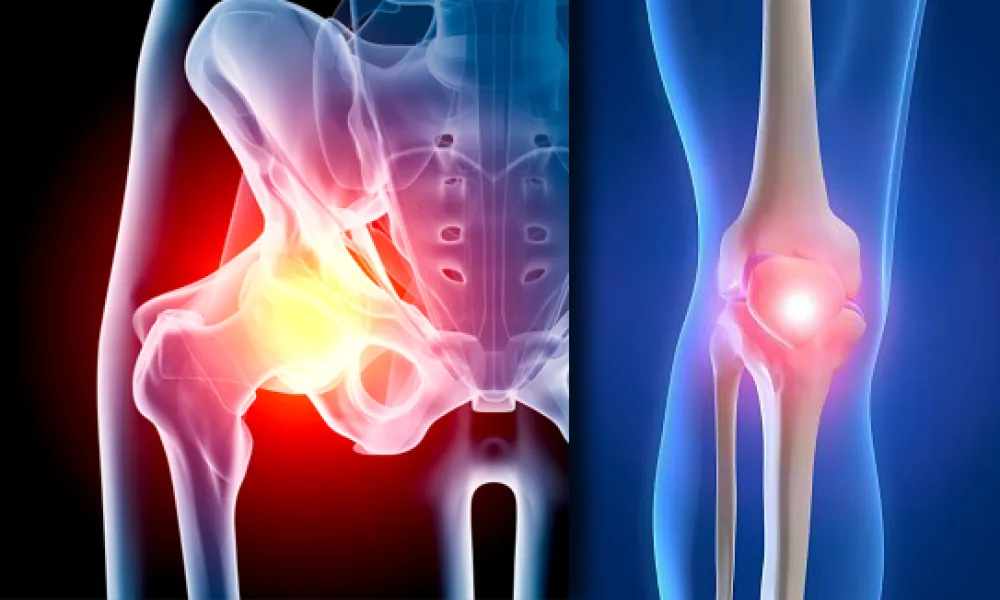The 2019 American Joint Replacement Registry (AJRR) was published in May 2020. The AJRR, in collaboration with the American Academy of Orthopedic Surgeons (AAOS), reports on 1.2 million patients with over 1.7 million hip and knee replacement procedures. This is the largest registry in the world in terms of annual procedure numbers. The goal of the AJRR is to provide actionable data for orthopedic surgeons in their journey to improve the lives of millions of patients who suffered from hip and knee arthritis.
Between 2012 and 2018, 602,582 total hip procedures were reported to AJRR. Primary or first-time hip replacements represented 80.5% of the procedures, revision total hip replacements represented 7.3%, hemiarthroplasty or a partial hip replacement for hip fracture represented 8.2%, total hip replacement for hip fracture 2.2% and hip resurfacing 0.9%.
The average length of stay in 2012 for a primary hip replacement was 2.6 days, in 2018 this decreased to 1.9 days. At Valley Medical Center in 2018 our average length of stay for a hip replacement was 1.1 days.
The report outlined implant usage and found that cementless hip replacements were utilized in over 90% of patients, a ceramic femoral head was utilized in 67% of patients, while metal heads were utilized in 33% of patients. The causes of revision hip replacement occurring at or before one year were infection in 23% of patients, instability of the hip in 19.7%, and fracture around the hip replacement in 16.6% of patients.
The AJRR also reviewed the data for knee replacement in the United States. In 2018, 2162 surgeons submitted data to the AJRR. These are generally surgeons who do a higher volume of joint replacement. The average caseload per surgeon was 45 knee replacements per year, the top quarter percent of surgeons did 56 total knees per year, the average number of partial knee replacements was 5 and the average number of revision total knees was 5.
The average age of patients undergoing knee replacement was 67 years old, for partial knee replacement 64 years old, and for revision knee replacement 66 years old. 60% of patients undergoing knee replacement were female and 40% were male.
The registry looked at the incidence of resurfacing the patients patella (knee cap) and found that, in 2018, in the United States, 90% of patients had their patella resurfaced. This is compared to the Australian registry, which revealed 67% of patients had their patella resurfaced and the Swedish registry, which revealed only 2.4% of patients had their patella resurfaced. They also noted that patients who had a patellar resurfacing had a lower rate of revision of their knee replacement. There is obviously wide geographic variability with regard to resurfacing the patella. Unlike hip replacements over 90% of total knees use cement fixation and less than 9% use cementless fixation. The use of cementless fixation is gradually increasing with new technology available.
The reasons for revision knee replacement included loosening of the implant in 25% of patients, mechanical issues in 22.5% of cases, infection in 20.5% of cases and instability of the knee in 12.6% of the cases. The cause of early revisions at or before three months after surgery were infection in 63.2% of cases, mechanical issues in 7.4%, instability in 6.7%, and fracture around the implant in 3.9%. They found that patients at highest risk for revision were those patients age 50 years or younger. When looking at all knee replacements, revision total knee replacement represented 7.5% of all knee replacement procedures.
The AJRR represents a significant amount of information regarding hip and knee replacement in the United States . At Valley Medical Center we were one of the early contributors of data to the AJRR. Having the ability of tracking our outcomes with regard to infection, readmission to the hospital at 30 and 90 days, and average length of stay, allows us to benchmark our results with other higher volume institutions in the United States. Year after year our outcomes have proven to be better than the average outcomes reported in the AJRR. By tracking our data and continuously comparing our results to national standards we insure that we are giving the best possible care to patients receiving hip and knee replacements at our institution.
In 2021 we will open our ambulatory surgery center which will allow us in a significantly larger scale to provide same day discharge as well as overnight stay for hip and knee replacement procedures, spinal surgery, and all other traditional outpatient orthopedic procedures. We look forward to contributing the data from our ambulatory surgery center to the AJRR so that we can compare our results of same day discharge to those from other centers around the United States. 2020 has been a very challenging year for all of us and the world. Better days are ahead. For more information you can go to: AAOS American Joint Replacement Registry.

